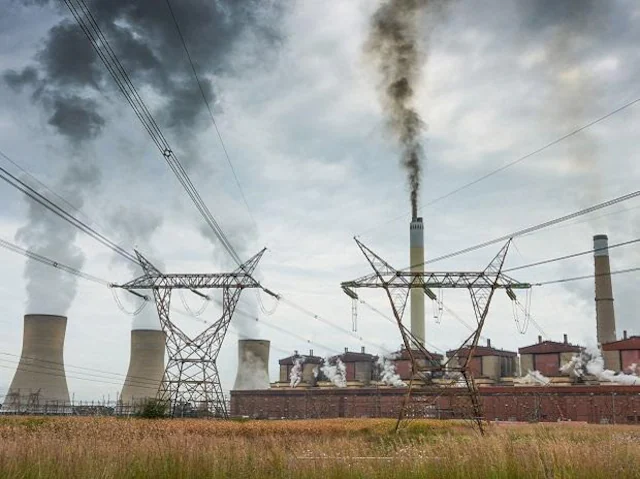

Yash Goyal | June 6, 2022
Power demand in the country touched a record of 203 Gw on Thursday on the back of an intense heatwave and the reopening of the economy. This comes at a time when the Centre is pushing for imported coal--after having shunned it for several years--in the wake of a shortage in the domestic market.
But this has stretched the whole supply chain, which is having to deal with a price of Rs 10,000 per tonne of the fossil fuel. At one end of the chain, the state-owned power distribution companies (discoms) continue to be financially distressed, and not in favour of coal imports. At the other end, domestic coal availability and supply is under pressure, and in the middle of all this, Rail infrastructure is spread thin.
Grand old mismatch problem
Close to 81 per cent of India’s operational coal-based power generation capacity is situated away from the mines (500 km and above). While ideally, most thermal power generation in any country should be closer to mines, it is exactly the opposite in India, said a Delhi-based sector analyst. “Be it political obligation or private investment, there's hardly any rationale for a power plant situated 500-1,000 km away from coal mines,” he said.
The fallout of this situation was felt by Indian Railways this year, when it had to cancel passenger trains just to make way for more coal to move from the Eastern coal bearing states towards plants in the North and East.
Over a span of 26 days, the national transporter cancelled 1,053 train trips spread over 42 trains, mostly in the South East Central Railway zone. The striking aspect was that despite freeing of tracks, delays in loading and longer transportation times ensured that the supply wasn’t augmented to its optimum.
Average lead is the distance that each tonne of freight has been transported. Through combined efforts of stakeholder ministries, the average lead of coal for TPPs had fallen from over 708 km in 2011-12 to 496 km in 2016-17, said officials. But the trend reversed quickly as demand went up, with average lead for coal freight in May also saw an increase, reaching 554 km as against the 517 km in the previous year.
“This year, as power demand increased, Railways had to supply more coal to faraway power plants since only plants near pitheads were not enough to meet the power demand, which is why our average lead this month increased. Ideally, we’d also want shorter leads since longer ones would mean that our wagon turn round (WTR) would be higher,” a railways official said.
Owing to track congestion and delays, the current average speed of freight trains is 18.8 km/h (including stabling and yarding time). The low freight speed does not help in a power crisis if TPPs are situated far away from coal mines.
Acute stress of Discoms and coal mining woes
National miner Coal India Limited (CIL), the largest supplier of dry fuel in the country, has been under criticism since the crisis broke out. Despite increased production, lack of accurate demand forecast coupled with payment delays from discoms caused stress on the supply line.
The growth in domestic coal production by CIL was subdued over the past five years with a CAGR of 2.4 per cent, said Sabyasachi Majumdar, Senior Vice President, Icra limited.
He said while the domestic coal supply to the power sector did increase by 25 per cent in FY2022 on a YoY basis, the stock levels at thermal units continue to remain low at 8-9 days over the past six months.
“There is a mix of reasons including sharp growth in electricity demand, subdued utilisation of the imported coal-based projects due to the prevailing high international coal prices given their inability to pass on the higher fuel costs under the PPAs,” Majumdar said.
Imported coal-based plants totalling 17 Gw are shut in the country, thereby increasing the demand pressure on domestic coal-based units. Icra said coal imports by power utilities decreased by 40.6 per cent on a YoY basis in FY2022.
In the middle of this, the union power ministry directed CIL to import coal, even as the coal ministry continues to claim, there is enough domestic supply. But as against the estimated demand of 38-40 MT from state and private gencos for blending, the total demand received by the CIL is 2.4 MT. For next year, CIL has placed a tender for importing 6 MT for building a stock to meet any exigency, said CIL executives.
The sole reason for not many states showing interest in imported coal is the cost. At 10,000/tonne, imported coal is atleast twice the price of CIL coal. Central government-owned NTPC which is in the process of issuing tenders worth 20 MT, will see the power tariff from its units go up by at least 50-70 paise. This will have to be borne by consumers.
Invoking Section 11 of the Act again, the power ministry last week allowed state and private units to charge a compensation tariff in lieu of importing coal. But not many discoms cannot afford it due to their weak financial situation.
Majumdar said, “The discoms continue to be plagued by high distribution losses, delays in issuance of tariff orders, inadequate tariffs in relation to cost of supply, delays/inadequacy of subsidy payments and delays in recovering electricity dues from state government bodies. All of these have precipitated continued losses for state discoms across most states and delays in payments to power generating companies. The overdues of discoms to power generation companies stood at Rs 1.3 lakh crore as of May 2022 according to the PRAAPTI portal.
A senior executive with a state regulatory commission said, the coal demand supply mismatch when discoms are sick, will lead to stress across the supply chain. “We are looking at a possibility of more stressed generating assets and litigation as well, not to mention discoms landing into more financial trouble,” he said.

Can Indian power sector afford coal imports to meet spike in demand?
Power demand in the country touched a record of 203 Gw on Thursday on the back of an intense heatwave and the reopening of the economy. This comes ...
Read

World coal market: brief overview
Over the past week, the European market saw thermal coal prices drop below 320 USD/t amid growing inventories at ARA terminals, closing long positions...
Read